Welcome to Paddington Clinic
Brisbane Acupuncture: Better Health, Naturally

Our Story
Paddington Clinic was established in 1983 by husband and wife team Peter Delaney and Mary Melling.
They spent 40 years refining treatments for hundreds of conditions. Since passing the business to their sons Aaron and Joel their primary role is training and mentoring the team.

Our Team
We have an industry-leading team with vast experience in Acupuncture, Naturopathy, Herbal Medicine, Intuitive Energy Therapy and Massage.
These are some of the oldest systems of medicine on the planet and they can have a profound influence on your health and overall wellbeing.

Our Clinic
Joel and Aaron run the clinic and have developed a reputation for providing the very best natural health care in Brisbane and beyond.
Our practitioners love their work. They all attend regular seminars and workshops to update their skills, both in Australia and abroad.
Burnout and Fatigue Treatment
Burnout and Fatigue Treatment
Fatigue and chronic tiredness are some of the most common symptoms our patients present with. Fatigue is not a natural state of health, it’s an indication that something is out of balance.
Stress, Anxiety & Sleep Disorders
Stress, Anxiety & Sleep Disorders
Stress is a leading cause of illness. It affects the circulatory system, organs, glands and the nervous system. It also affects our sense of happiness, and enjoyment of life.
Pain and Injury Recovery
Pain and Injury Recovery
At Paddington Clinic we take a Multifaceted Approach to Treating Pain and Injury. Natural therapies combined with proven treatments backed by science and clinical studies.
Healthy Ageing & Wellness
Healthy Ageing & Wellness
It’s never too late to support healthy ageing. Natural therapies can also assist in the management of existing age-related ailments, such as memory loss, arthritis, diabetes, and heart disease.
Your personalized path to true wellbeing – precision diagnosis, tailored plans, and an integrative approach with proven results. Experience a professional yet warm healing environment where multi-disciplinary care meets comprehensive solutions—giving you a one-stop destination for relief, recovery, and a thriving life.
At our clinic, we understand that every person’s journey to wellness is unique. That’s why we go beyond symptom relief to pinpoint the root cause of your concerns with precision diagnosis and a fully tailored plan.
Whether you’re seeking relief from stress, pain, or low energy, we provide the right solutions in a professional yet warm, healing environment.
Our multi-disciplinary team offers a comprehensive range of proven therapies—integrating science-backed treatments with holistic approaches—all under one roof.
With expert care, ongoing support, and a results-driven approach, we empower you to recover, restore balance, and thrive in every aspect of life.
Free Mini Consultation

Discover how we can help you. Book a Free 15 min consultation with one of our senior practitioners.
What type of therapy is right for me?
Understanding health can be difficult in our modern world. It’s not always easy to decide on what your best options are.
Paddington Clinic’s approach to healthcare involves our practitioners’ combined contributions to your health needs.
A plan is developed regarding therapies and an appropriate course of action. This step-by-step approach empowers you in the process of treatment, ensuring the best outcomes for your health.
Acupuncture
Acupuncture
The acupuncture styles we use are gentle, and suited to everyone, including needle-shy patients and children. Acupuncture aims to return your spark for life rather than just being symptom-free.
Massage Therapy
Massage Therapy
An approach that promotes physical and mental well-being, massage not only addresses muscular tension but also enhances circulation, reduces stress, and supports natural healing processes.
Herbal Medicine
Herbal Medicine
The use of plants, plant extracts and botanical substances for therapeutic purposes, drawing on a combination of traditional knowledge and scientific understanding.
Naturopathy
Naturopathy
Combining ancient herbal wisdom and cutting edge science to support the systems of the body, utilising herbs, minerals and diet to support quick relief with lasting results.
Our practitioners are members of the following professional associations:


Take The First Step Towards Better Health
Our treatments are designed to help you feel better while you get better, so you can enjoy life and do more of the things you love.
